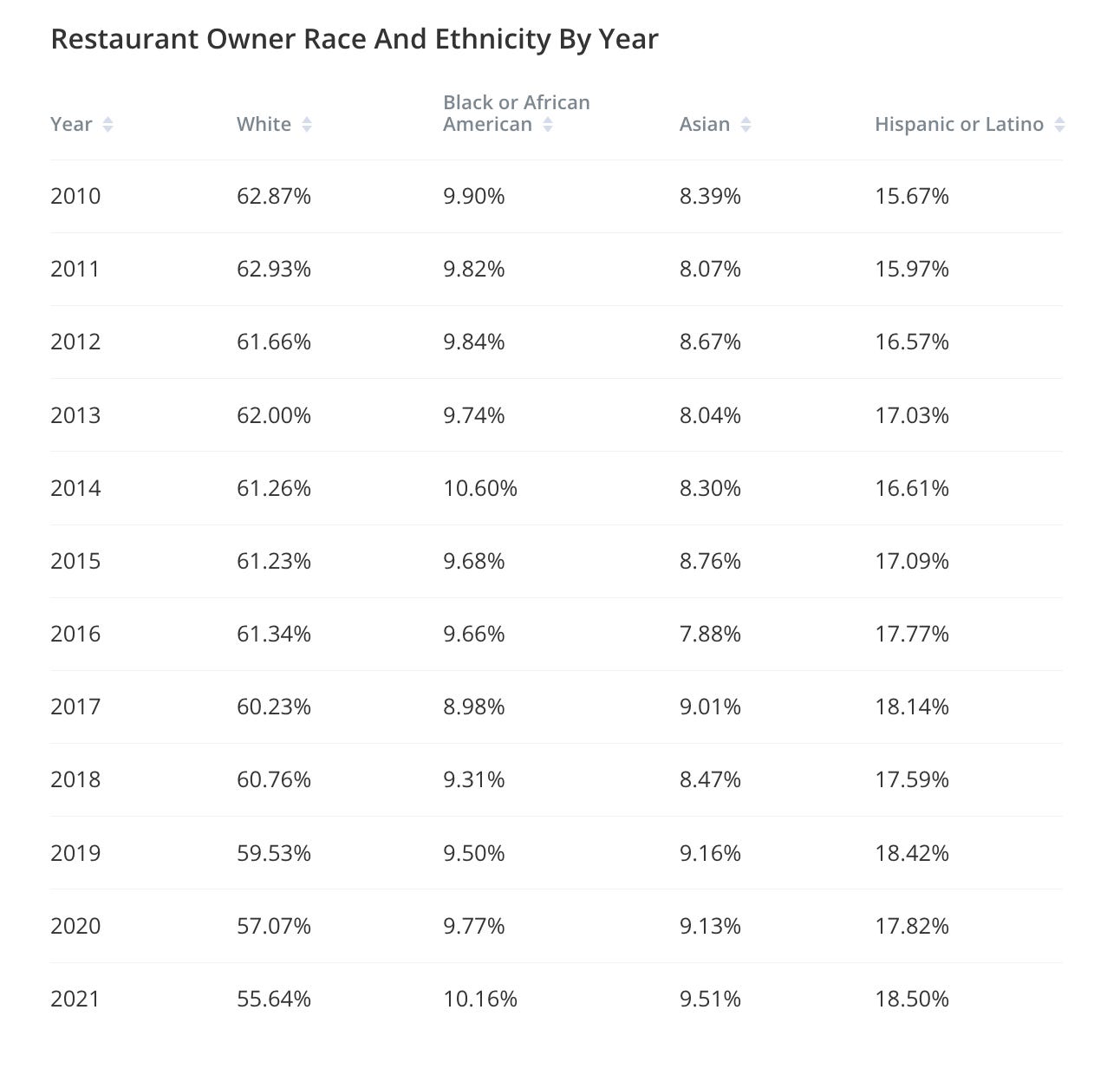The Optimist
My Top 5 Reasons to Be Super Optimistic About the Restaurant Industry
I have occasional, but intense, swings between optimism and pessimism about the restaurant industry. The next two posts are going to explore the extreme poles of those swings. Thankfully, I always end up on the optimistic side of the pendulum so that’s where we’ll start. This is a rundown of the top reasons I’m very optimistic about the future of restaurants.
The Brilliance, Resilience and Ingenuity of the People
Restaurant operators and employees are some of the most ingenious, adaptable, and hard-working people, period. Examples of this come in all shapes and sizes. World Central Kitchen catalyzes this ingenuity to serve millions of meals in impossible circumstances. During COVID, operators spun up entirely new business models in days while serving front line workers meals, all with almost no staff. Fine dining restaurants pivoted to takeout, restaurants became grocery & convenience stores, and sommeliers led virtual wine tastings. Long before and after COVID, Chef’s and Front-of-House operators needed to be endlessly creative and adaptable to make the 19th century business model of restaurants work in a 21st century world.
The Centrality of Restaurants to Modern Urban Life
Restaurants are the social operating systems of our cities; they are the primary framework for social interaction and cultural exchange. We fulfill a basic biological need for calories, conduct business, date & find mates, and celebrate milestones in restaurants. There is not another place, IRL or digital, that creates more social infrastructure than restaurants.
As restaurants occupy ever more ground floor real estate, they are also an increasing source of tax revenue. Restaurant openings were up 10% in 2023 nationwide from 2022 and up 2% from pre-pandemic 2019. This will only increase as more industries digitize. As real estate values drop in urban cores due to remote work, rents will come down and more restaurants will be needed to re-invent CBDs into truly mixed use neighborhoods.
Another second order effect of remote work is the increasing competition between cities for residents. People do not have to live where they work to the same degree, creating more choice. Restaurant and nightlife scene are a determining factor for many younger workers with the freedom to choose where to live.
All of these points CAN (there’s no guarantee) lead to an alignment of interest across stakeholders in the restaurant industry. City governments, landlords and developers, suppliers & service providers, and residents all benefit from a healthy restaurant ecosystem more than ever before. This makes me hopeful that barriers to entry will come down and regulatory processes will be streamlined. Most importantly, I am cautiously optimistic that the wider ecosystem that relies on restaurants will recognize that extracting as much value as you can from the industry will inevitably create a tragedy of the commons.
The Potential of AI
I recently received (along with anyone else who signed up for it) an email from Dharmesh Shah, the co-founder and CTO of Hubspot. The premise of the email was that the future is about more small businesses with the thesis being:
“If more people have access to AI that makes it easy to start and grow a business, and those tools aren’t just reserved for the bigger players with bigger budgets, we will actually have more successful businesses of all sizes.”
I tend to agree with this because I’ve experienced it firsthand. While I’ve thought about many of the ideas in this newsletter for 10+ years, the courage to push past a blinking cursor on a blank page eluded me until I could get an AI-assisted jumpstart. We’re using AI translation of training materials in our restaurants to help people learn in the language in which they are most comfortable. We’re playing with AI to create a seating game for managers and hosts to practice maximizing the dining room.
I am optimistic that natural language coding and AI agents will unlock new, higher margin revenue streams for restaurants. I’m also hopeful AI will help disintermediate the relationship between a restaurant and its community, saving restaurants money from costly tech “partners”.
Increased Representation:
Ownership amongst Black & African American, Asian, and Latin people has increased at a slightly greater rate than population growth of those groups. As the table below shows, there has also been an increase in representation by race and gender in food media since 2020. There is still a lot of progress to be made here but it is encouraging to see better representation in ownership, media and awards.
Food and beverage served with hospitality can be a powerful medium for understanding and appreciating different cultures. Food is a means cultural exchange, preserves traditions, reflects social and historical contexts, expresses cultural values and enhances cultural awareness. In my most optimistic moments, I know food, beverage and hospitality are an important part of bridging cultural divides.
Generational Change
It’s pretty much guaranteed that every generation will assert that the younger generations are lesser workers. My generation, X, are slackers. Millennials are entitled and can’t be managed. Gen Z needs constant feedback, rewards, and affirmation regardless of performance. Every generation is lazier than the previous is a cliche.
My own experience is that people’s attitude to work is changing, especially post-pandemic. Our teams have higher expectations of us as owners and operators. There is an increased desire for work-life balance. There is less tolerance for the dysfunction and toxicity that has been associated with the restaurant industry.
Those last 4 sentences are part of why I am optimistic. If an industry is going to employ 1 in 10 people, it should always strive to be better. A certain amount of pressure from the workforce is often a necessary part of an industry improving.
I am also encouraged by a recent resurgence of teens in the workforce. As the chart below shows, labor participation for 16-19 year olds has fallen off a cliff in the 2000s but began climbing again in 2013. Our industry employs more young people than any other. We’ll benefit from this increased participation in the short term. I also believe that more people working in restaurants in their teen years will have broader benefits over the longer term for the wider workforce.
Sales in restaurants will reach $1.2-$1.3 Trillion by 2030. There are likely to be over 1.1 million restaurants by then. On my optimistic days, which is most of them, the restaurants are more profitable, offer better jobs with higher pay and better balance, and continue to build community. These things won’t happen on their own accord but from the ingenuity of operators and their teams along with a recognition by all stakeholders that everyone benefits from healthier restaurants. It’s that last part that worries me.





